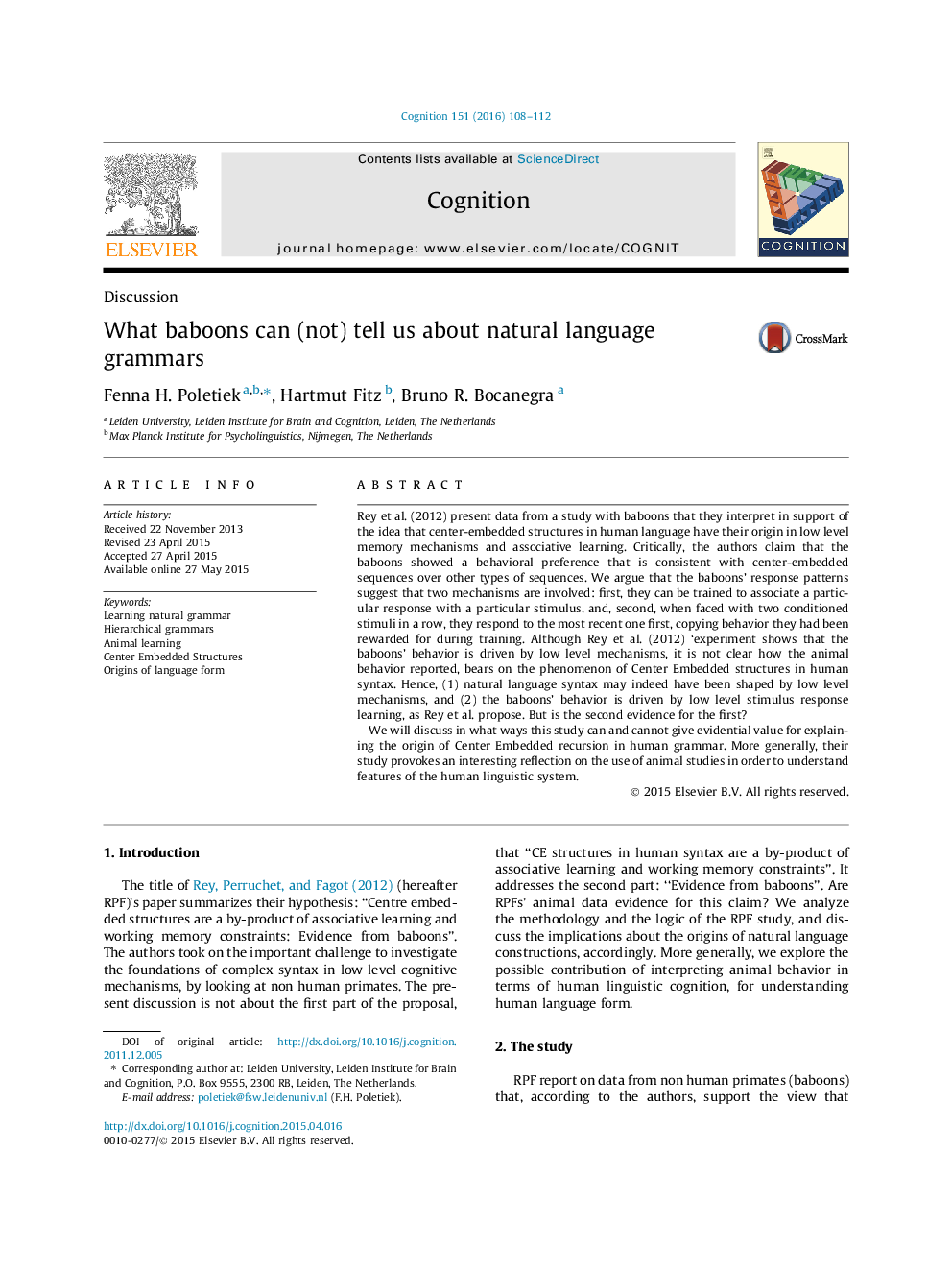| Article ID | Journal | Published Year | Pages | File Type |
|---|---|---|---|---|
| 926417 | Cognition | 2016 | 5 Pages |
•Baboons’ responses in a stimulus-response task look like patterns of human grammars. Does it follow that grammar is a by-product of ‘low level’ animal behavior?•In the SR task, the baboons do not have the same task goal as humans have when producing language.•A large part of the baboons’ responses were unrelated to any pattern in human grammar.
Rey et al. (2012) present data from a study with baboons that they interpret in support of the idea that center-embedded structures in human language have their origin in low level memory mechanisms and associative learning. Critically, the authors claim that the baboons showed a behavioral preference that is consistent with center-embedded sequences over other types of sequences. We argue that the baboons’ response patterns suggest that two mechanisms are involved: first, they can be trained to associate a particular response with a particular stimulus, and, second, when faced with two conditioned stimuli in a row, they respond to the most recent one first, copying behavior they had been rewarded for during training. Although Rey et al. (2012) ‘experiment shows that the baboons’ behavior is driven by low level mechanisms, it is not clear how the animal behavior reported, bears on the phenomenon of Center Embedded structures in human syntax. Hence, (1) natural language syntax may indeed have been shaped by low level mechanisms, and (2) the baboons’ behavior is driven by low level stimulus response learning, as Rey et al. propose. But is the second evidence for the first?We will discuss in what ways this study can and cannot give evidential value for explaining the origin of Center Embedded recursion in human grammar. More generally, their study provokes an interesting reflection on the use of animal studies in order to understand features of the human linguistic system.
